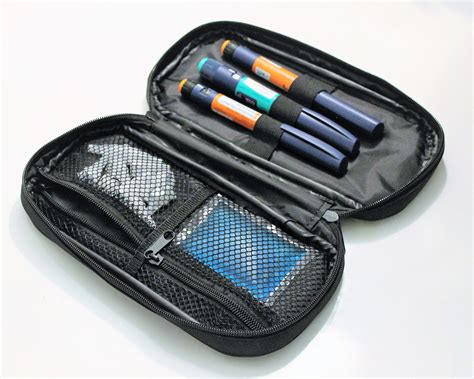5 Insulin Travel Tips

Introduction to Insulin Travel
When traveling, especially for extended periods, individuals with diabetes face unique challenges in managing their condition. One of the critical aspects of diabetes management is the proper handling and administration of insulin. Insulin is a lifesaving medication that helps regulate blood sugar levels, and its effectiveness can be influenced by various factors, including temperature, handling, and timing of administration. For those who rely on insulin, having the right strategies and knowledge is crucial for a safe and enjoyable travel experience.
Understanding Insulin Sensitivity and Travel
Travel can disrupt routine, affecting insulin sensitivity and blood glucose levels. Changes in diet, time zones, physical activity, and stress levels can all impact how the body responds to insulin. Therefore, it’s essential to be prepared and understand how these factors can influence diabetes management.
5 Key Tips for Insulin Travel
Here are five essential tips for individuals who use insulin and are planning to travel: - Pack Essentials Wisely: Always carry your insulin and diabetes supplies in your hand luggage. Check with your airline for any specific requirements or restrictions on carrying medical equipment and medications in the cabin. It’s also a good idea to pack a small day bag with essentials like glucose meters, test strips, and fast-acting glucose in case of emergencies. - Keep Insulin Cool: Insulin can be sensitive to extreme temperatures. If you’re traveling to a hot climate, consider using a cooling wallet or pouch to keep your insulin at a safe temperature. These products are designed to keep insulin cool without the need for refrigeration and can be a lifesaver during long trips. - Plan for Time Zone Changes: Traveling across time zones can affect your insulin regimen. Consult with your healthcare provider to adjust your insulin schedule according to the destination time zone. This planning can help minimize disruptions to your blood sugar control. - Be Prepared for Emergencies: Carry a list of emergency contact numbers, including your healthcare provider and a diabetes helpline. It’s also wise to wear a medical alert necklace or carry a card that indicates you have diabetes and use insulin, in case of an emergency. - Stay Hydrated and Monitor Blood Sugar: Travel, especially by air, can cause dehydration, which may affect blood sugar levels. Stay hydrated by drinking plenty of water, and monitor your blood sugar levels more frequently than usual to catch any discrepancies early.
Additional Considerations
Besides these tips, there are several other considerations to keep in mind when traveling with insulin: - Documentation: Always carry a prescription for your insulin and any other medications, along with a letter from your doctor explaining your diabetes management plan. This documentation can be helpful in case of security checks or if you need medical assistance during your trip. - Insurance: Check your health insurance to see if it covers you abroad. Consider purchasing travel insurance that covers medical emergencies, including those related to diabetes. - Cultural and Language Barriers: If you’re traveling to a country where you don’t speak the language, learn basic phrases related to your condition, such as “I have diabetes” and “Where can I find a pharmacy?” This preparation can help in emergencies.
| Item | Description |
|---|---|
| Insulin | Enough for the duration of your trip plus extra in case of delays |
| Syringes or Pens | According to the amount of insulin you'll need |
| Glucose Meter and Test Strips | For monitoring blood sugar levels |
| Fast-acting Glucose | For treating low blood sugar |
| Cooling Wallet (if necessary) | For keeping insulin cool in hot climates |
💡 Note: Always check the expiration dates of your insulin and other medications before you leave, to ensure you have adequate supplies that will remain effective throughout your trip.
As you prepare for your travels, remembering these tips can help ensure your safety and the effectiveness of your insulin therapy. Whether you’re exploring new cities, relaxing on a beach, or venturing into the wilderness, managing your diabetes doesn’t have to limit your travel aspirations. With the right knowledge and preparations, you can navigate any travel situation confidently.
In reflecting on the journey of managing diabetes while traveling, it becomes clear that preparation and awareness are key. By understanding the challenges, being mindful of insulin sensitivity, and taking proactive steps, individuals with diabetes can enjoy their travels without letting their condition hold them back. The journey to a destination is just as important as the destination itself, and with the right strategies, every moment can be savored and enjoyed.
What should I pack in my hand luggage for diabetes management?
+
You should pack essentials like insulin, syringes or pens, a glucose meter, test strips, and fast-acting glucose for emergencies. It’s also a good idea to carry a small day bag with essentials in case your checked luggage is delayed or lost.
How do I keep my insulin cool during travel?
+
Consider using a cooling wallet or pouch designed for insulin. These products can keep your insulin at a safe temperature without the need for refrigeration, making them ideal for travel to hot climates.
What documentation should I carry with me when traveling with diabetes?
+
Always carry a prescription for your insulin and other medications, along with a letter from your doctor explaining your diabetes management plan. This documentation can be helpful in case of security checks or if you need medical assistance during your trip.